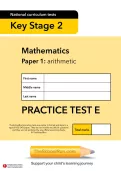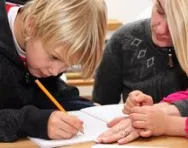Important update from TheSchoolRun
For the past 13 years, TheSchoolRun has been run by a small team of mums working from home, dedicated to providing quality educational resources to primary school parents. Unfortunately, rising supplier costs and falling revenue have made it impossible for us to continue operating, and we’ve had to make the difficult decision to close. The good news: We’ve arranged for another educational provider to take over many of our resources. These will be hosted on a new portal, where the content will be updated and expanded to support your child’s learning.
What this means for subscribers:
- Your subscription is still active, and for now, you can keep using the website as normal — just log in with your usual details to access all our articles and resources*.
- In a few months, all resources will move to the new portal. You’ll continue to have access there until your subscription ends. We’ll send you full details nearer the time.
- As a thank you for your support, we’ll also be sending you 16 primary school eBooks (worth £108.84) to download and keep.
A few changes to be aware of:
- The Learning Journey weekly email has ended, but your child’s plan will still be updated on your dashboard each Monday. Just log in to see the recommended worksheets.
- The 11+ weekly emails have now ended. We sent you all the remaining emails in the series at the end of March — please check your inbox (and spam folder) if you haven’t seen them. You can also follow the full programme here: 11+ Learning Journey.
If you have any questions, please contact us at [email protected]. Thank you for being part of our journey it’s been a privilege to support your family’s learning.
*If you need to reset your password, it will still work as usual. Please check your spam folder if the reset email doesn’t appear in your inbox.
What are SATs results used for?



Prepare your child for SATs today
- Your guide to SATs
- KS1 & KS2 SATs revision courses
- SATs practice papers in English & maths
But do the test results actually matter? What are they used for – and what happens if your child doesn’t make the grade?
SATs and your child
Those who oppose SATs often say that the results are purely for the school’s benefit, and are meaningless as far as the individual child is concerned. But is this actually true?
In some respects, a good set of SATs results is indeed more important to schools than to the child. There’s no direct consequence of a child ‘failing’ their SATs; the results may reflect badly on the school, but they don’t have to retake the exams.
SATs do, however, measure the progress a child has made since KS1, either with their results from the now optional KS1 SATs, taken at the end of Year 2, or other assessments. Schools may use the Reception Baseline Test for comparison instead.
This may mean that information is passed from a child’s primary school to their new secondary school so they can be given the necessary help.
You’ll be given your child’s SATs results in July, usually at the same time as their end of year report. You’ll be told their actual scores and whether they have achieved or exceeded the expected national standard.
SATs and secondary schools
Almost all secondary schools group children into sets or streams based on their academic ability, and SATs results may be used as part of the decision-making process.
That said, because children are only assessed in English and maths, and in particular skills within these subjects, it’s common for secondary schools to use their own tests (such as Year 7 CATs) as part of the setting process.
The results of these tests may be used on their own, or alongside SATs results, to determine which ability group a child ends up in.
Secondary schools also use SATs results to work out their Progress 8 score. This is a performance measure of how well pupils progress between Year 6 and Year 11, with their SATs results as a starting point.
Progress 8 scores give a picture of attainment across the entire year group, rather than on a child-by-child basis, and are used to place secondary schools in national league tables.
Some secondary schools will set targets for your child based on their KS2 results. These may be GCSE targets or interim targets for the end of each year. However, most schools will take other factors into consideration when target-setting, as well as KS2 results.
SATs and league tables
Why are some schools so preoccupied with SATs? Put simply, it’s because they’re the measure by which they’re ranked in league tables.
Schools are listed according to the percentage of children who reach the expected standard in SATs (nationally, it’s expected that 65% of children will achieve this), and the percentage of pupils exceeding the expected standard.
This shows how well a school is performing compared to others in your area.
As parents often make a decision about where to send their child to school based on league tables, it’s important to schools that as many pupils as possible achieve or exceed the nationally expected standard in SATs.
You can see how schools in your area are doing on the official Find and Compare Schools website.
It’s important to note, however, that SATs results are not the only thing to consider when comparing schools. They don’t tell you anything about how children perform in other subjects, or about the likelihood of bullying, or the range of extracurricular clubs on offer, for example.
They also only show children’s attainment, and not their progress. This is why league tables now include ‘progress measures,’ too.
SATs and progress measures
Primary school progress measures involve comparing pupils’ KS2 SATs results to other children across the country who were at a similar level at the end of Year 2, if they took (the now optional) KS1 SATs.
It’s thought to be a fairer system, as it recognises progress rather than attainment, and compares schools whose pupils have similar starting points.
Most schools will have progress scores between -5 and +5.
If a school has a score of 0, it means that pupils in that school make the expected amount of progress between the end of KS1 and the end of KS2.
If they have a score above 0, it means children at that school do better than expected compared to other pupils nationwide.
A score below 0 shows that they make less progress than is expected.
Progress measures are reported separately for reading, writing and maths.
SATs and Ofsted
SATs scores are also scrutinised by Ofsted when they inspect a school. The inspectors have to consider overall consistency in performance, and look for evidence that standards are improving or declining. SATs are a measure of this.
This is only one part of the picture, however. The inspectors will also look at areas including attendance, behaviour, the quality of leadership, the effectiveness of the governors, and views of parents and children in the school community, among other things.








